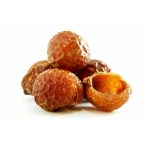With a history of development spanning thousands of years, essential oils are known as the treasures of nature, widely used in many fields, such as health care, and cosmetics. Essential oils appeared and developed according to human civilization. Researchers in the West believe that it is the East that is the historical origin of essential oils. Since time immemorial, people have been known to use aromatic plants and flowers in religious rituals directly. Over the past 50 years, the world’s demand for essential oils has been influenced by many factors. The demand for ingredients for spices and perfumery has increased naturally with the growth of the world population, especially for food and drink flavoring ingredients in developed countries, where there is a large change in the diet.
Chemically, essential oils are complex mixtures containing many volatile compounds, which have a characteristic odor depending on the source of the material. Most essential oils are derived from plants in many different plant organs, such as roots (Vetiveria zizanioides), stems (Cordia trichotoma), leaves (Cymbopogon nardus), flowers (Lavandula officinalis), fruits (Citrus), spp.) and also in seeds (Piper nigrum L.); There are only a few essential oils derived from animals such as civet, skunk, ambergris, etc.
Mint (Mentha L.) belongs to Lamiaceae, subfamily Menthoideae, genus Mentha, about 10-150 cm tall and has a characteristic scent. Mint has been cultivated for a long time in many countries around the world. In Vietnam, mint species grows wild on a huge area in mountainous provinces such as Lao Cai, Lai Chau, Son La, Vinh Phu (Tam Dao), … and is also grown in many places throughout the country, belongs to the Asian mint species Mentha arvensis L., has many strains with very fragrant aroma, high essential oil content. Mint flowers are purple, light purple, and white. Mint leaves are the main raw material used to distill essential oils. Mint is both a medicinal plant and an industrial plant with high economic value. Peppermint helps cure fever, runny nose, sore throat, hoarseness, stimulates digestion, antiseptic, relieves pain, and cures intestinal diseases such as defecation, dysentery… After a long busy day, the body needs relaxation. In addition to the ability to “refresh” the body, menthol also has the ability to help improve the immune system, support blood circulation, refresh the mind, whiten and firm the skin, tighten pores, reduce dark scars, support acne treatment, remove wrinkles and purify the body. The quality of essential oils, especially the content of menthol, a major component in menthol, depends on many factors, such as the distillation method and the raw materials used.


Students at Faculty of Environmental and Food Engineering, Nguyen Tat Thanh University, are experimenting with preparing raw materials and distilling Japanese peppermint.
In 2019, MSc. Tran Bui Phuc conducted a preliminary survey on the distillation process of Japanese peppermint essential oil (Mentha arvensis L.) harvested in Lam Dong by hydro-distillation (HD) and microwave-assisted extraction (MAE). Research results show that Japanese peppermint essential oil extracted by MAE gives high menthol content (73.46%). There are different strains in each European or Asian mint or grown in many other geographical regions, so the menthol distilled from the same European or Asian mint will be a little different. Following the obtained results, the research will be expanded to evaluate the quality of essential oil from raw materials in many different localities of Southern Vietnam to find a source of high-quality raw materials high quality, reasonable price, and capable of supplying raw materials for the research and production of personal care products, applied in cosmetics, food…








